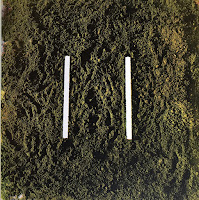Ruminations on “STATELESS” 「無國籍」的聯想
By Luchia Meihua Lee
Suppose a group of Frenchmen formed an alternative government
and claimed to be the official government of France. Suppose that indeed they controlled 75% of
French land at one point, but were defeated in a French civil war and retreated
to the Basque land in Spain. After some time had passed, they might bow to
reality and relinquish their claim to govern France but then claim – with the
consent of the Basque people – to govern that land they controlled in the
Basque part of Spain.
Now the Spanish government in Madrid might contest the alienation
of some of their country. But it would be no affair of the French government in
Paris.
This is the situation with the Republic of China with one
crucial geographic difference. The land
to which the government of the Republic of China retreated, after losing a
civil war in China, did not belong to a third country. It was an island,
Taiwan, that Japan had ruled and claimed as a Japanese prefecture, but which
the United States seized as a bounty of war and gave to the Republic of China.
Japan has never claimed Taiwan since losing the Second World War. But the
parallel still holds – the People’s Republic of China has no valid claim on the
territory of Taiwan.
Steven Balogh's “stateless” series paintings apply graffiti
lines as in paintings in recent years, a free-flowing line and a dynamic
abstraction (Gestural abstraction); I like to cite Cy Twombly’s later paintings
as an exemplar. Developing work of the Bauhaus in Germany, Black Mountain and
Jackson Pollock, Twombly extended abstraction to embrace an avant-garde new
world of street graffiti and classical painting. The difference in this series
of refugees and stateless works is that Steven Balogh put graffiti on images of
his early passport and identity documents. Steven Balogh in1989 was officially listed
as “stateless” which recalls the diplomatic dilemma of people living in Taiwan.
For example, the flag of Taiwan needs to be hung inside the New York office of
Taiwan’s de-facto consulate. Also,
the country can't join international organizations or participate under its own
name in international sporting events. Steven Balogh's passport turned out to
represent a transitional period for him; he has embraced a new life and
identity as he passed from the refugee camp to New York. Can Taiwan let us know
that the internationally-recognized nationality is coming?
「無國籍」的聯想
綠可
假設一群法國人組建了一個替代政府並聲稱自己是法國的官方政府。假設他們確實在某一時刻控制了75%的法國土地,但在法國內戰中被擊敗並撤退到西班牙的巴斯克地區。經過一段時間後,他們可能會屈服於現實並放棄他們對法國統治的主張,但隨後在巴斯克人的同意下,要求他們控制他們在西班牙巴斯克地區控制的土地。
現在,馬德里的西班牙政府可能會對他們某些國家的異化提出質疑。但這與巴黎的法國政府沒有任何關係。
這與中華民國的情況有一個重要的地理差異。在中國內戰後,中華民國政府撤退的土地不屬於第三國。這是一個台灣島嶼,日本統治並聲稱是日本的一個地區,但是美國卻把它作為戰爭的獎勵並賜給了中華民國。自從第二次世界大戰失敗以來,日本從未聲稱過台灣屬於他們的領土。但這個概念也是並行存在 - 中華人民共和國對在台灣的領土上也不會是有效的主張。
匈牙利裔美國人史蒂文·巴洛(Steven Balogh)倖免於俄羅斯強加匈牙利的共產主義,被迫的義務兵役以及在奧地利難民營的拘留; 他現在在紐約Astoria區域生活和工作。 他在我們2019年 “都會部落”的展覽中提供的作品反應了他在匈牙利的兵營的不人道要求及的國家的不道德行為。 在奧地利難民營時,他的護照被沒收,並獲得了這份早期身份證件。 從他1989年11月在美國臨時合法居民那裡獲得的護照,特別是將他稱為無國籍人士。
這塗鴉式的綫條是巴洛(Balogh)近數年來蟬蛹的繪畫形式,一種自由揮灑的綫條也是一種動態的抽象(Gestural abstraction)形式,但我喜用Cy Twombly 來連接他的近期畫作,Cy Twombly在德國包浩斯(Bauhaus)、美國黑山學院(Black Mountain)與Jackson Pollock的基礎上,將抽象概念融合街頭塗鴉,並蘊涵經典繪畫加童趣創造出一種新境。不同的是巴洛(Balogh)在這系列的「難民」及「無國籍」作品中,把這種塗鴉加在護照上面及早期的照片。在圖像上我們看到1989 年他的的國籍(Nationality)是無國籍-“Stateless" 讓我聯想到居住在台灣的人民,不也是屬於”無國籍“,這種無國籍狀態也是在台灣整體在外交上的困境,如駐紐約辦事處的國旗是需要懸挂在大廳内部,或是無法參與國際組織,以及使用城市的名稱來代表國家等等。目前正式通用的ROC Taiwan 事實上也不代表一個國家,不同於Steven Balogh 的護照是一種過渡期, 在他通過了難民營的庇護他迎接了新的生活與身份,台灣可以讓我們瞭解即將有確定的nationality來臨嗎?
 |
Steven Balogh, Stateless I, 2019. Stateless II, 2019。Acrylic, pastel, pigment print on canvas
22 x 34 inches,Courtesy of the artist
|

Steven Balogh, Refugee Passport I, 2019. Refugee Passport II, 2019. Acrylic, pastel, pigment print on canvas. 21 x 44 inches. Courtesy of the artist
 | |
|
 | ||
|
 |
Information authentication II, 1980, Ink,
acrylic on paper 28 x 40 inches
|
 |
| Info-kamikaze I./self-portrait, 1979, C print, 12 x 24 inches Courtesy of the artist, Contemporary art collection Ferenczy Museum Center, Hungary, Europe |
 |
Info-kamikaze II, 1979, C print, 12 x 24
inches,
Contemporary art collection Ferenczy Museum Center, Hungary, Europe
|


No comments:
Post a Comment